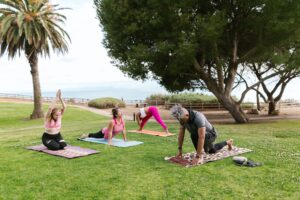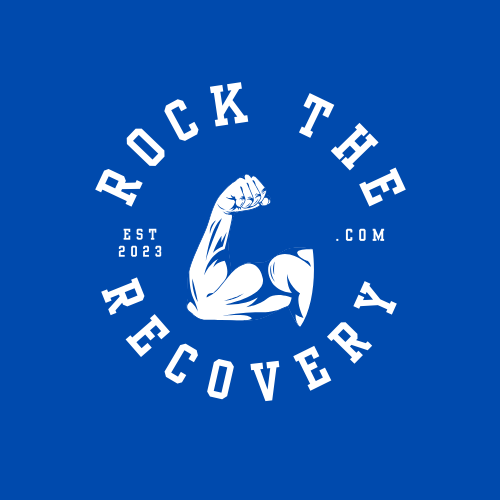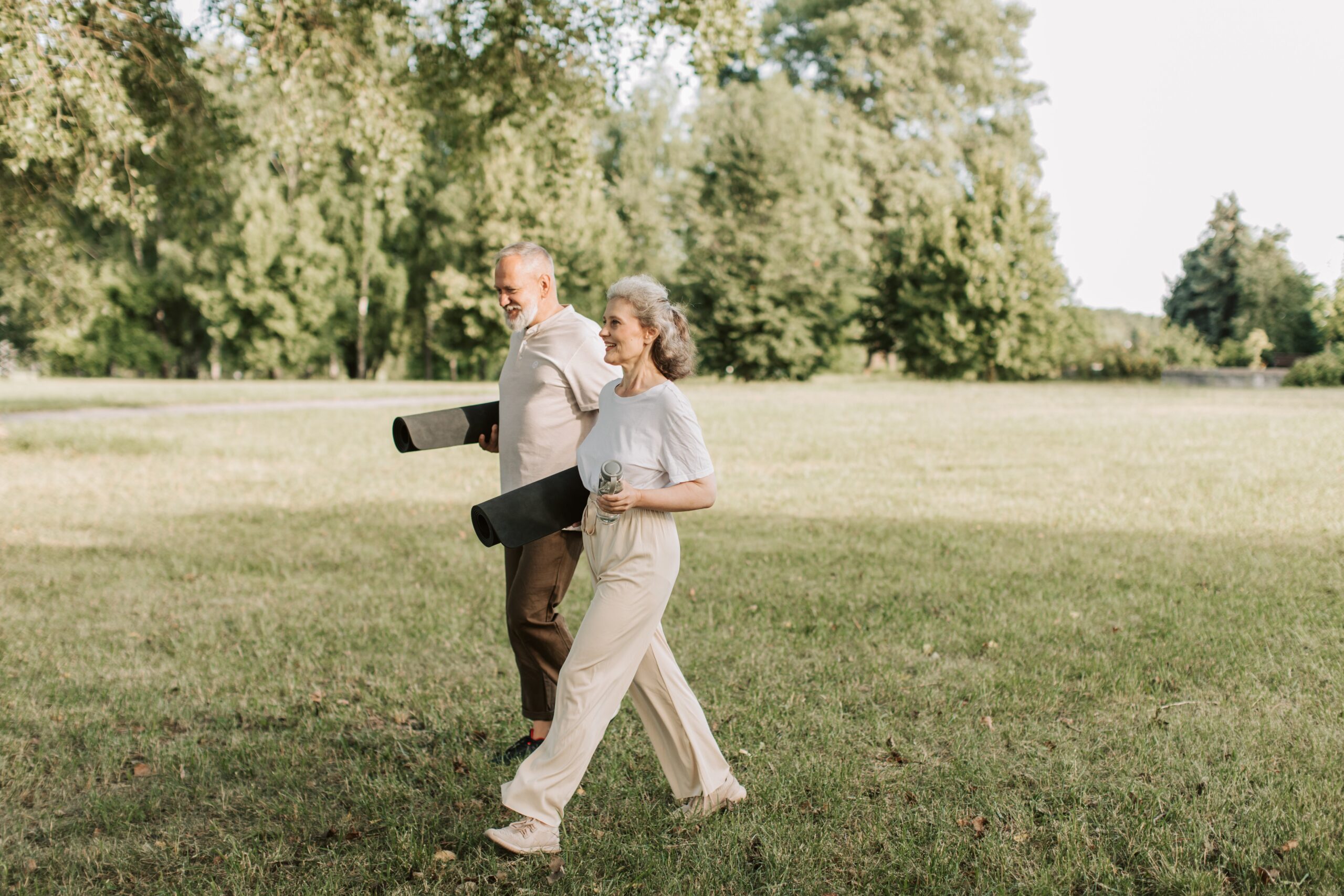In part one we have discussed Parkinson’s affects, and the symptoms that may go along with them. Now, it is time to get to the important part. What do we do about it? As your PD symptoms progress your needs from PT will change. However, with a good action plan in place, we can stay on top of the issues. With a better understanding of the practical affects of the disease; you can have a better understanding of how to manage it.
No matter where you are in the process of your disease the described approaches below will be beneficial to you and your caregivers. The first half of this article will discuss some key philosophies for everyday use. The second half will discuss some excellent treatment resources that you may likely find in your community.
Some Important Basics:
When we look at the research of how PD effects your brain, we can start to get insight of how to counteract these symptoms. First let’s start with the basics. Much of the recommendations described below are going to be part of your action plan. This is going to include possibly intermittent or consistent Physical Therapy services, other community wellness programs, and home exercise routines. Where you fall into these plans is very individualized, but for each of you it will be an ongoing, and continual part of life. Some philosophies described below will become as much a part of your daily life as breathing and eating. Let’s take a pause to say that all the recommendations in this article should be okayed by your MD first.
One of the major symptoms noted in a significant portion of PD patients is rigidity. With this comes decreased range of motion, and flexibility. We can only move as far as we are passively able to move our joints. If you are trying to counteract small movements caused from PD, then it’s important you have big motion! Because of this it is important to have a consistent stretching program. If necessary, having a PT provide manual therapy treatment to maintain or improve the problem areas. The tightness will often present most in the spine (including neck and back), hips and shoulders.

Another important basic is Cardiovascular exercise. There has been positive research showing the benefit of Moderate intensity cardio exercise when done regularly throughout the week. This requires your heart rate to increase to 70-80% of your Heart rate max. (220 – age) x 0.7 = moderate intensity pulse goal during exercise. If your cardio exercise also provides an excuse to perform large amplitude movements or stretches, then bonus points are provided!
Now Let’s Hit the PD Where It Hurts:
As we discussed in part 1, Parkinson’s Disease affects your brain where a lot of processing is happening. Information on what your body is doing (and planning on doing) is coming through and being filtered/processed. Let’s look at an analogy for basic walking. Imagine for instance you were typing an email on a laptop. Your clicking fingers on the keyboard are what you are trying to accomplish. The computer is processing that information like your brain would; and the words popping up on the screen is how your body ultimately moves. Now imagine your fingers are clicking quickly away at 70 words per minute. Yet the screen is lagging way behind. Letters you typed 5-6 words ago are eventually sputtering onto the screen. This would make it very difficult to successfully write an email; or in the actual case maintain your basic walking in a functional way.
When related it to PD, the slow words showing up on screen are going to appear in your walking as decreased amplitude, or smaller than expected movements. The processor in your computer is not keeping up very well. Now let’s take this analogy one step further. Imagine now instead of writing a simple email, you are editing large, complicated videos with multiple sophisticated pieces of software running. This is taking up a lot of processing, and right in the middle of the job, your computer freezes! This is exactly what happens in your walk. Your feet are glued to the ground.
As PD progresses what constitutes “a lot of processing” may change. Each person would present very different as well. For one person this could mean hiking on uneven terrain, while searching for birds in the trees and having a meaningful conversation. For someone more advanced in the PD process this might mean attempting to process how to turn and sit down in a chair. Possibly attempting to walk down a hallway with a tv on and someone walking toward them. Maybe having a caregiver who is yelling at them to do the same cue over and over again?
Let’s Look at Where Things Go Wrong:
The tasks described above were not just placed there with little regard. They were chosen because there are certain activities that many people struggle with. Just like walking through a doorway, or over a change in flooring material, at some point the above will become more challenging. Again, it comes down to how much are you asking your brain to process and then perform physically. Let’s use the example of turning to sit in a chair.
Seems pretty simple, you’ve done it all your life, just turn and sit right? Not necessarily. When you really start to break it down there is a lot to it. We are walking toward the chair, turning, backing up and lining up all at the same time. That’s actually a lot of balls to have up in the air to be juggling. Your brain attempts to process, without the appropriate dopamine the above tasks all start to clog the system and now you are struggling.
How about another quick example? You are walking through your home down the hallway and go to turn into the bedroom. Your wife is helping you because you have fallen, and she worries about you doing it alone. You again start to festinate and struggle to enter the room. Your wife is becoming more and more anxious at seeing you struggle thinking you might fall again. You can hear it in her voice as she tells you 15 different things to do all at the same time. It’s a tight-fitting doorway, and the tiles in the hallways change to carpet in the bedroom.
Use the tools from the first example to find how many stimuli and challenges you are dealing with in that moment. How many can you come up with? To name a few; turning, going through a threshold, change in flooring, auditory stress and over instruction from a ‘trying to be helpful’ spouse. You can go even further. Your wife is stressed but how are you feeling in that moment, frustrated, scared, maybe angry? Maybe you are feeling rushed because you are trying desperately to make it to the toilet. These are all additional stimulus too that will clog up your processing centers.
Change The Philosophy:
So, in these moments, when you time and time again have shuffled, festinated, froze, or fallen. You maybe now are already seeing what needs to change. Break tasks down into the most basic parts you can think of and tackle those tasks one at a time. Eliminate as much external (and internal) stimuli as possible. First, we need to clear your mind as much as possible of anything but that simple task. “Ok I’m going to walk straight. Great now I will turn facing into the bedroom. Ok I’m fixed on looking at the picture on the wall as I walk straight (through the doorway).” Success, you’re in! Why did we stare at the picture? Because this eliminates any additional visual stimulus, such as the change in flooring or threshold.
For example, in the picture below, you can see now how busy floors, lots of additional visual interest is now a recipe for trouble. If you have the option to redecorate, consider going with simple.

Caregiver Feedback:
In the example above, you can feel the stress emanating off of the wife. This is not having the positive effect maybe she thinks she is having. Again, to avoid overstimulation, caregivers to those with PD have as much to do with getting out of their way as we do with helping. Going to Physical Therapy with your spouse is extremely important in learning how to help, if and when they begin to need it.
By following the philosophies described above, it could have already gone much smoother to the point where his wife didn’t feel the need to start yelling. However, the basics to helping in his care are going to be; remain calm, keep it very simple, only one thing at a time. Basically, the wife needed to speak up if she saw that there was struggling without success, then remind him plainly what to be thinking of doing in that moment. Otherwise, more than this and you become additional over stimulus. “Ok just turn” or “Stop and reset” or “Big steps” or Heel-toe” Whatever works for you best.
What Else You Can Do:
A lot of times in Physical Therapy we teach ways to break through the freezing or festination of movement. Each Therapist may come at the issue with a different approach, and everyone will respond differently. So, finding what works for you best is key. Here is a list of some approaches that you may find helpful:
- When freezing:
- Stop and reset, clear your mind, and find your balance on your feet. Once you are there, start again.
- Take a large step backward, then start with a large step to return to walking.
- Stop attempting to walk, and just focus on taking one large step out in the direction you are trying to go.
- When festinating:
- Some find a metronome, or auditory cue like music set to a very specific beat helpful.
- Eliminate external stimulus and focus on a target ahead of you.
- Make sure you have the best and safest assistive device for you. A Parkinsons focused walker called the U-step walker could be a better option (seek your PT for help and advice).
Other Programs:
Here are a few national programs you may also find useful:
-
- LSVT Certified Therapist: Going to a certified Therapist in LSVT or newer programs coming out now brings another interesting theory to PD. In general, the program looks at the amplitude of your movement, and provides different techniques to help practice making your movements or speech Bigger.
- Roc City Boxing: Roc City boxing is a boxing program developed specifically for PD. This program combines large amplitude, high velocity movement, with other great wellness benefits. Group classes can often also be a place for persons with PD to talk and support one another.
Wrap up:
As said many times, each person’s experience with PD is going to vary. Some may find rigidity as their primary issue, some more uncoordinated movement. This article hits on some advice that anyone can benefit from hearing. Be it a PT/OT/SLP, or a family member. Or maybe you are the person who is doing everything they can do not let their PD get the best of them. Best of luck and I hope this article brings you freedom and safety.
To hear when new articles arrive, please follow us on Facebook!


